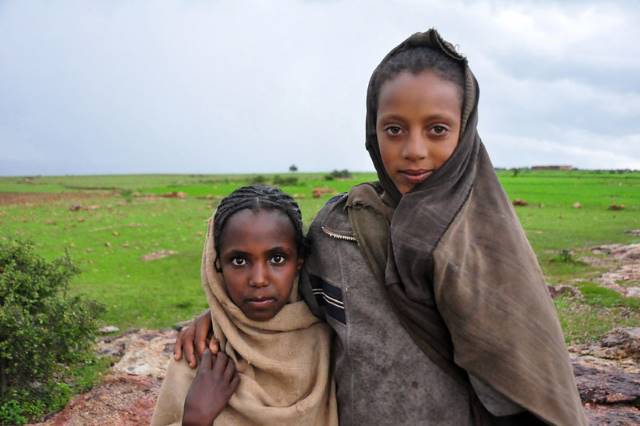Natural and Weaponized Famine in Tigray
 The term genocide describes the systematic mass murder of a racial, political or cultural group. Genocides have been witnessed in countries such as Germany, Russia and the Democratic Republic of the Congo. But, the concept of genocide is more than an abstract term for something long passed. Acts of genocide occurred more recently in Rwanda and the Rohingya Muslims of Myanmar are also recent victims of such violations. Acts of genocide were also recently reported in Ethiopia’s Tigray Region, which borders Eritrea and Sudan, as the Tigray People’s Liberation Front looks to wrest control of the region from the Ethiopian government. Furthermore, the war in Tigray, which has also involved Eritrean military units, is not only taking lives through violence, it is causing a potential famine in Tigray.
The term genocide describes the systematic mass murder of a racial, political or cultural group. Genocides have been witnessed in countries such as Germany, Russia and the Democratic Republic of the Congo. But, the concept of genocide is more than an abstract term for something long passed. Acts of genocide occurred more recently in Rwanda and the Rohingya Muslims of Myanmar are also recent victims of such violations. Acts of genocide were also recently reported in Ethiopia’s Tigray Region, which borders Eritrea and Sudan, as the Tigray People’s Liberation Front looks to wrest control of the region from the Ethiopian government. Furthermore, the war in Tigray, which has also involved Eritrean military units, is not only taking lives through violence, it is causing a potential famine in Tigray.
Conflict Causes Famine
Tigray, home of the Tigrayan ethnic group, comprises only around seven million people, equating to 6% of the Ethiopian population. However, in the past months, its people and infrastructure have felt the force of the entire Ethiopian military. Furthermore, when a nation of 118 million people is wracked by conflict, there is bound to be difficulty transporting resources to all the rural and urban areas in need. Compounded by violence and displacement, famine puts Tigrayans at risk of malnutrition, exposure to the elements, illness and death. As the threat of both man-made and natural famine looms, the international community must intervene to address it.
Rising Poverty in Ethiopia
The famine in Tigray is occurring during a civil war further complicated by an externally intervening nation. While Ethiopia experienced famine in the 1980s, the current famine differs in that it results not only from natural causes but from human violence, creating desperate circumstances for Tigrayans living in poverty. Over the past few decades, Ethiopia had been making great strides in reducing poverty, with the national poverty rate dropping from 45% in 1995 to roughly 24% in 2015. Unfortunately, due to the COVID-19 pandemic and recent military conflict, extreme poverty is back on the rise, not only in rural areas but also in the country’s largest city, Addis Ababa.
An Opportunity to Intervene
Despite the vast damage inflicted on the Tigray countryside by Ethiopian and Eritrean forces, the powerful and committed Tigrayan Liberation Army “regained control of the regional capital” in late June 2021. This significant moment in the civil war marks a potential transition period and a crucial time for humanitarian organizations to step in and provide vital resources to the region.
Getting water and food to Tigrayans will be crucial during any lull in the violent outbreaks that have displaced nearly two million and killed more than 50,000 people across the region. The starvation-induced by both Ethiopian government actions and natural circumstances has forced hundreds of thousands of civilians into near-death situations.
In June 2021, 12 NGOs, including Amnesty International, signed a letter to the U.N. Human Rights Council (HRC) calling for a robust international response to the crisis in Tigray. In particular, the letter calls on the HRC to address reports of human rights violations and acts of genocide in Tigray. Until peace is restored, NGOs and government agencies will do their best to sustain life in this historically and culturally rich region of Africa.
– Trent R. Nelson
Photo: Flickr
